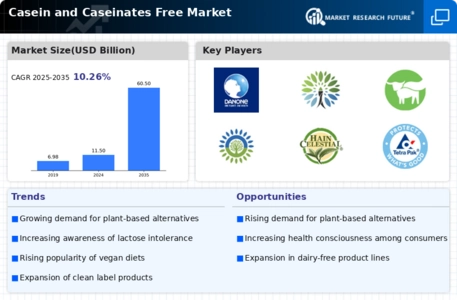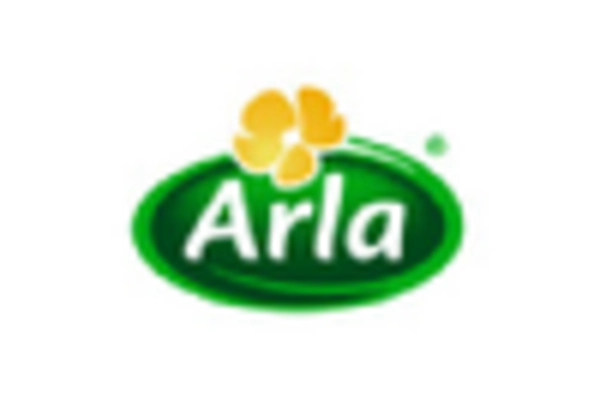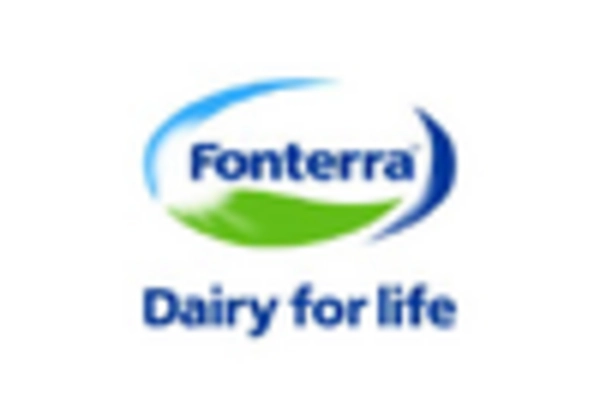Health and Nutritional Awareness
The casein and caseinates free Market is significantly influenced by rising health and nutritional awareness among consumers. As individuals become more informed about the nutritional content of their food, there is a marked shift towards products that offer health benefits without compromising on taste. This trend is evident in the increasing popularity of protein-rich alternatives, which are often perceived as healthier options. Market Research Future indicates that the demand for high-protein products is expected to grow at a compound annual growth rate of 8% over the next five years. Consequently, the Casein and Caseinates Free Market is poised to capitalize on this trend by developing innovative products that align with consumer health goals.
Increasing Demand for Dairy Alternatives
The Casein and Caseinates Free Market is experiencing a notable surge in demand for dairy alternatives. This trend is largely driven by a growing consumer preference for plant-based diets, which has led to an increase in the production of non-dairy products. According to recent data, the market for dairy alternatives is projected to reach approximately 30 billion USD by 2026, indicating a robust growth trajectory. This shift is not merely a fad; it reflects a broader societal movement towards healthier and more sustainable eating habits. As consumers become more health-conscious, the Casein and Caseinates Free Market is likely to benefit from this transition, as manufacturers innovate to create appealing products that cater to this demographic.
Sustainability Trends in Food Production
Sustainability trends are increasingly influencing the Casein and Caseinates Free Market. Consumers are becoming more aware of the environmental impact of their food choices, leading to a preference for products that are produced sustainably. This shift is prompting manufacturers to adopt eco-friendly practices and develop products that align with sustainability goals. Market data suggests that products labeled as sustainable or environmentally friendly are experiencing higher sales growth compared to conventional options. As sustainability becomes a key purchasing criterion, the Casein and Caseinates Free Market is likely to adapt by prioritizing sustainable sourcing and production methods, thereby appealing to environmentally conscious consumers.
Regulatory Support for Alternative Proteins
The Casein and Caseinates Free Market is benefiting from increasing regulatory support for alternative proteins. Governments are recognizing the need to diversify protein sources to enhance food security and sustainability. This has led to favorable policies and funding for research and development in the field of alternative proteins. For instance, various countries are investing in initiatives that promote the use of plant-based proteins, which could potentially bolster the Casein and Caseinates Free Market. As regulations evolve to support these initiatives, manufacturers may find it easier to innovate and bring new products to market, thereby expanding their reach and enhancing competitiveness.
Technological Innovations in Food Processing
Technological advancements in food processing are playing a crucial role in shaping the Casein and Caseinates Free Market. Innovations such as improved extraction methods and enhanced formulation techniques are enabling manufacturers to create high-quality, plant-based alternatives that closely mimic the taste and texture of traditional dairy products. These advancements not only improve product quality but also increase production efficiency, allowing companies to meet rising consumer demand more effectively. As technology continues to evolve, the Casein and Caseinates Free Market is likely to see a proliferation of new products that cater to diverse consumer preferences, further driving market growth.


















Leave a Comment